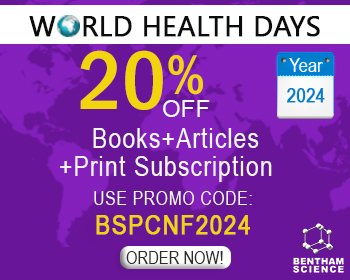Abstract
Novel sulfa Schiff bases were synthesized and characterized by a reaction between aromatic sulfonamides and aromatic aldehydes or heterocyclic ketones in equimolar ratios. Their cytotoxicity was evaluated by the resazurin assay towards human sensitive CCRF-CEM and multidrug-resistant CEM/ADR5000 leukemia cells. Three of the tested compounds viz., 4-(anthracen-9-ylmethyleneamino)-N-(pyrimidin-2-yl)benzenesulfonamide (4), 4-(anthracen-9- ylmethyleneamino)benzenesulfonamide, (5) and 4-((3-phenylallylidene)amino)benzene-sulfonamide, (6) were cytotoxic (IC50 values: 5.38-19.96 µM). CEM/ADR5000 cells were not cross-resistant to these compounds, indicating activity against otherwise drug-resistant tumors. Compound 6 inhibited P-glycoprotein by increasing doxorubicin accumulation and reducing expression of P-glycoprotein in CEM/ADR5000 cells. A human P-glycoprotein homology model was used for molecular docking studies. Compound 6 and verapamil (a well-known P-glycoprotein inhibitor) docked with similar binding energies to the same binding pocket.
Keywords: Anthraldehyde, cancer, cinnamaldehyde, condensation, isatin, multidrug resistance, sulpha drugs, schiff bases.
Current Medicinal Chemistry
Title:Cytotoxicity of Novel Sulfanilamides Towards Sensitive and Multidrugresistant Leukemia Cells
Volume: 21 Issue: 23
Author(s): T. AlSalim, M.E.M. Saeed, J.S. Hadi, M. Zeino, R. Gany, O. Kadioglu, S.J.J. Titinchi, H.S. Abbo and T. Efferth
Affiliation:
Keywords: Anthraldehyde, cancer, cinnamaldehyde, condensation, isatin, multidrug resistance, sulpha drugs, schiff bases.
Abstract: Novel sulfa Schiff bases were synthesized and characterized by a reaction between aromatic sulfonamides and aromatic aldehydes or heterocyclic ketones in equimolar ratios. Their cytotoxicity was evaluated by the resazurin assay towards human sensitive CCRF-CEM and multidrug-resistant CEM/ADR5000 leukemia cells. Three of the tested compounds viz., 4-(anthracen-9-ylmethyleneamino)-N-(pyrimidin-2-yl)benzenesulfonamide (4), 4-(anthracen-9- ylmethyleneamino)benzenesulfonamide, (5) and 4-((3-phenylallylidene)amino)benzene-sulfonamide, (6) were cytotoxic (IC50 values: 5.38-19.96 µM). CEM/ADR5000 cells were not cross-resistant to these compounds, indicating activity against otherwise drug-resistant tumors. Compound 6 inhibited P-glycoprotein by increasing doxorubicin accumulation and reducing expression of P-glycoprotein in CEM/ADR5000 cells. A human P-glycoprotein homology model was used for molecular docking studies. Compound 6 and verapamil (a well-known P-glycoprotein inhibitor) docked with similar binding energies to the same binding pocket.
Export Options
About this article
Cite this article as:
AlSalim T., Saeed M.E.M., Hadi J.S., Zeino M., Gany R., Kadioglu O., Titinchi S.J.J., Abbo H.S. and Efferth T., Cytotoxicity of Novel Sulfanilamides Towards Sensitive and Multidrugresistant Leukemia Cells, Current Medicinal Chemistry 2014; 21 (23) . https://dx.doi.org/10.2174/0929867321666140120120708
| DOI https://dx.doi.org/10.2174/0929867321666140120120708 |
Print ISSN 0929-8673 |
| Publisher Name Bentham Science Publisher |
Online ISSN 1875-533X |
Call for Papers in Thematic Issues
Advances in Medicinal Chemistry: From Cancer to Chronic Diseases.
The broad spectrum of the issue will provide a comprehensive overview of emerging trends, novel therapeutic interventions, and translational insights that impact modern medicine. The primary focus will be diseases of global concern, including cancer, chronic pain, metabolic disorders, and autoimmune conditions, providing a broad overview of the advancements in ...read more
Cellular and Molecular Mechanisms of Non-Infectious Inflammatory Diseases: Focus on Clinical Implications
The Special Issue covers the results of the studies on cellular and molecular mechanisms of non-infectious inflammatory diseases, in particular, autoimmune rheumatic diseases, atherosclerotic cardiovascular disease and other age-related disorders such as type II diabetes, cancer, neurodegenerative disorders, etc. Review and research articles as well as methodology papers that summarize ...read more
Chalcogen-modified nucleic acid analogues
Chalcogen-modified nucleosides, nucleotides and oligonucleotides have been of great interest to scientific research for many years. The replacement of oxygen in the nucleobase, sugar or phosphate backbone by chalcogen atoms (sulfur, selenium, tellurium) gives these biomolecules unique properties resulting from their altered physical and chemical properties. The continuing interest in ...read more
Current advances in inherited cardiomyopathy
Describe in detail all novel advances in multimodality imaging related to inherited cardiomyopathy diagnosis and prognosis. Shed light to deeper phenotypic characterization. Acknowledge recent advances in genetics, genomics and precision medicineread more
 41
41
- Author Guidelines
- Graphical Abstracts
- Fabricating and Stating False Information
- Research Misconduct
- Post Publication Discussions and Corrections
- Publishing Ethics and Rectitude
- Increase Visibility of Your Article
- Archiving Policies
- Peer Review Workflow
- Order Your Article Before Print
- Promote Your Article
- Manuscript Transfer Facility
- Editorial Policies
- Allegations from Whistleblowers
- Announcements
Related Articles
-
An Overview of Notch Signaling in Adult Tissue Renewal and Maintenance
Current Alzheimer Research Preferentially Expressed Antigen in Melanoma (PRAME) and the PRAME Family of Leucine-Rich Repeat Proteins
Current Cancer Drug Targets “Endothelial Progenitor Cells” as a Therapeutic Strategy in Cardiovascular Disease
Current Vascular Pharmacology Expression of Histone Acetyltransferase GCN5 and Histone Deacetylase 1 in the Cultured Mouse Preimplantation Embryos
Current Pharmaceutical Design New and Highly Potent Antitumor Natural Products from Marine-Derived Fungi: Covering the Period from 2003 to 2012
Current Topics in Medicinal Chemistry Mevalonate Pathway and Human Cancers
Current Molecular Pharmacology Targeting Regulatory T Cells for Anticancer Therapy
Mini-Reviews in Medicinal Chemistry E2F1-Mediated Apoptosis as a Target of Cancer Therapy
Current Molecular Pharmacology Biomarkers and Multiple Drug Resistance in Breast Cancer
Current Cancer Drug Targets The Phosphoinositide 3-Kinase (PI3K)/AKT Signaling Pathway as a Therapeutic Target for the Treatment of Human Acute Myeloid Leukemia (AML)
Current Signal Transduction Therapy Preface [Hot Topic: Marine Natural Products (Guest Editor: Vassilios Roussis)]
Current Medicinal Chemistry Combinations of Plant Polyphenols & Anti-Cancer Molecules: A Novel Treatment Strategy for Cancer Chemotherapy
Anti-Cancer Agents in Medicinal Chemistry Triggering PIK3CA Mutations in PI3K/Akt/mTOR Axis: Exploration of Newer Inhibitors and Rational Preventive Strategies
Current Pharmaceutical Design Rhenium-188 and Copper-67 Radiopharmaceuticals for the Treatment of Bladder Cancer
Mini-Reviews in Medicinal Chemistry Pharmacological and Clinical Studies on Purine Nucleoside Analogs- New Anticancer Agents
Mini-Reviews in Medicinal Chemistry Pleiotropic Effect of Mahanine and Girinimbine Analogs: Anticancer Mechanism and its Therapeutic Versatility
Anti-Cancer Agents in Medicinal Chemistry Epigenetic Multiple Modulators
Current Topics in Medicinal Chemistry Nuclear Hormone Receptors and Female Reproduction
Current Molecular Medicine Immunotherapy Resistance Mechanisms in Renal Cell Cancer
Current Signal Transduction Therapy Inhibiting Breast Cancer Progression by Exploiting TGFβ Signaling
Current Drug Targets























